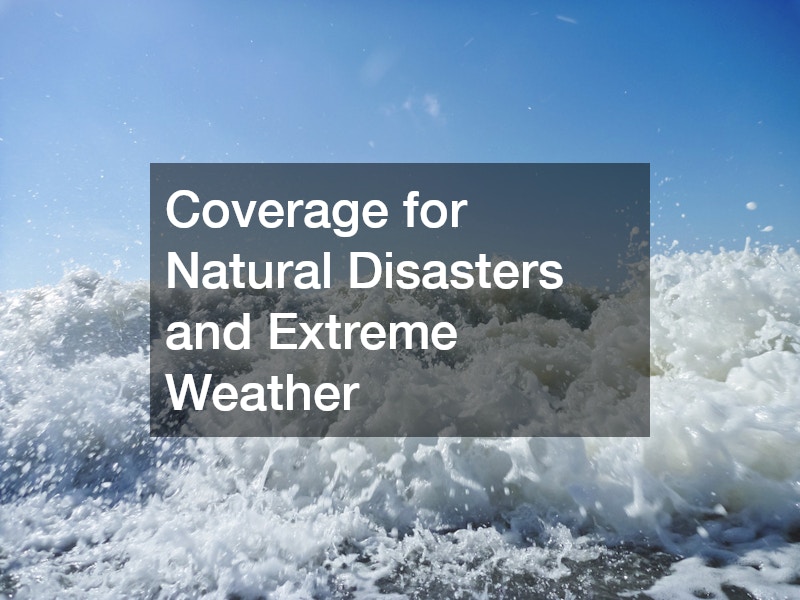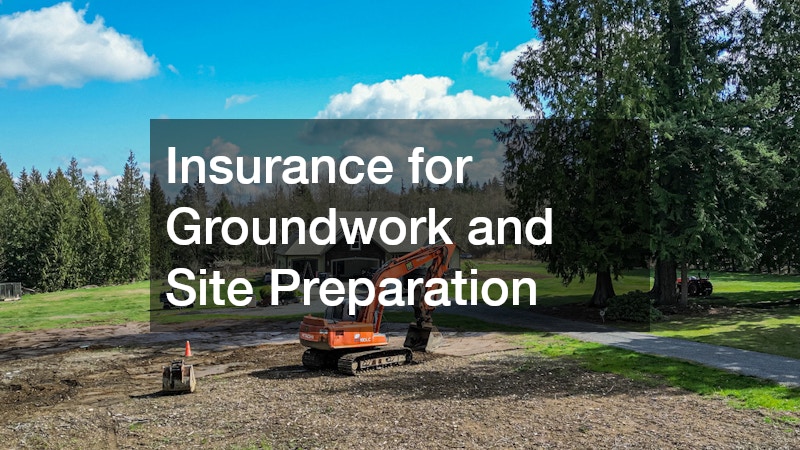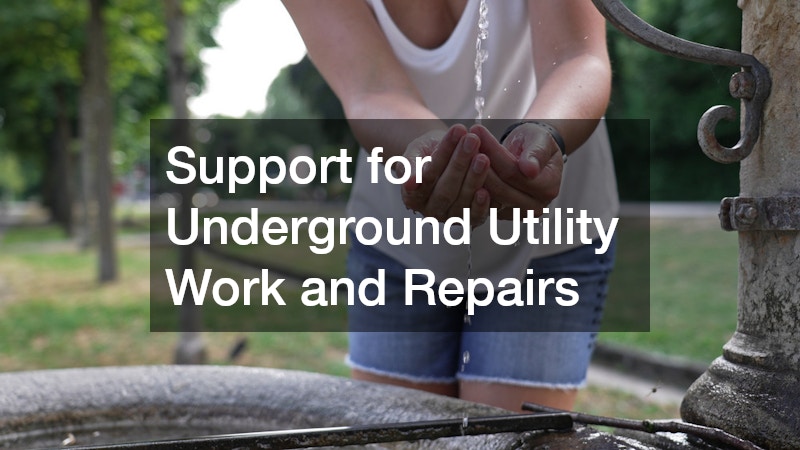
When it comes to protecting your home and the investments you’ve made in it, having the right insurance coverage is more than just a financial safeguard—it’s peace of mind. Unexpected events such as storms, floods, fire, or even accidental property damage can leave you facing significant repair costs. Home insurance is designed to step in when these moments happen, making sure that you can recover without draining your savings. However, not all insurance policies are created equal. This is why understanding the specific plans available and how they can be tailored to your property is critical.
Listed home insurance plans highlight the coverage options you might need, giving you the ability to prepare for both common and rare emergencies. These plans can address everything from structural repairs to replacing vital equipment like a home generator or repairing damage from necessary land-clearing work. They can also help with repairs involving specialized contractors, such as a roofer, home builder, or irrigation company, after a disaster.
By reviewing the law aspects that apply to your property and understanding how each coverage option works, you can build a policy that keeps your home protected year-round. The following sections explore key coverage areas and how they contribute to your preparedness strategy.
It is essential to match your coverage to your actual risks. This may mean adding endorsements for high-value assets, adjusting deductibles to fit your budget, or working with flood insurance agents who understand your region’s specific hazards. An informed approach ensures that you’re not only meeting legal requirements but also building a safety net that truly supports your home’s recovery when the unexpected happens.
Coverage for Natural Disasters and Extreme Weather

Severe weather events are among the leading causes of home insurance claims. Whether it’s a major storm, hurricane, or flood, damage can be both widespread and costly. In such cases, law aspects related to insurance claims determine how quickly and efficiently you receive compensation. It’s important to work closely with flood insurance agents who can help you evaluate the level of flood risk in your area and assure your policy includes adequate protection.
Extreme weather coverage can encompass more than just flooding. Depending on your location, you might also need protection against wind damage, hail, or wildfires. These policies often include specific terms on coverage limits, deductibles, and exclusions, so understanding the law aspects of your agreement is essential.
Homeowners who take the time to secure comprehensive protection for natural disasters are more likely to recover quickly and with fewer financial setbacks. Having the right coverage ensures you can afford repairs, hire necessary specialists like a roofer or excavating crew, and replace damaged systems without excessive delays.
Another key consideration is making sure that your coverage accounts for indirect damages. For example, a severe storm might damage not only your home but also outdoor systems like irrigation lines or a home generator. Comprehensive listed home insurance plans can connect these elements, making sure that all affected parts of your property are included in the repair process.
Protection for Roof Damage and Structural Repairs
Your roof is one of the most vulnerable parts of your home, constantly exposed to harsh weather conditions. Damage to a roof can lead to leaks, interior water damage, and even structural instability. In many listed home insurance plans, roof coverage is a specific inclusion that takes into account the materials, age, and overall condition of the roof at the time of the claim.
Law aspects surrounding roof coverage often define whether your insurer will pay for a full replacement or just repairs. To assure the best outcome, work with a roofer who can provide detailed assessments and repair estimates. Documenting the state of your roof before and after damage occurs can be critical for claim approval.
In some cases, roof repairs also involve related work such as well pump replacement if leaks affect your water system, or pump service if flooding impacts your home’s utilities. These situations highlight why it’s important to review the interconnections between coverage areas within your home insurance plan.
Additionally, some policies offer preventive maintenance benefits that help offset the costs of inspections and small repairs before larger damage occurs. While these benefits aren’t as common, they can be particularly useful in extending the life of your roof and reducing long-term claims.
Insurance for New Home Construction and Major Renovations
If you’re building a new home or undergoing major renovations, standard home insurance might not fully protect you. Many policies require additional endorsements or separate coverage for projects involving a home builder. The law aspects governing these situations assure that both the construction process and the final structure are covered in case of damage or loss.
Construction-related risks include theft of building materials, accidental damage to partially completed structures, or weather damage before the project is finished. Coverage for these incidents often extends to temporary structures, tools, and equipment. This is especially important when coordinating with contractors who may also bring in specialists for land clearing, trenching service, or other groundwork.
By discussing your plans with your insurer ahead of time, you can make sure the right endorsements are added to your policy. This proactive approach helps avoid gaps in coverage that could leave you responsible for major expenses. Some insurers also provide specialized policies for owner-builders, giving you more control over the construction process while making sure that every stage of your project is protected from potential losses.
Backup Power Solutions for Emergency Preparedness

Power outages can happen unexpectedly, whether from storms, equipment failures, or local grid issues. Having a home generator provides an immediate solution, keeping essential systems running until power is restored. In many cases, listed home insurance plans can cover the replacement or repair of a home generator if it’s damaged by a covered event.
The law aspects of coverage for backup power systems often depend on how the generator is installed and whether it’s considered part of the home’s permanent structure. Portable units may not qualify for the same protection as built-in models. Working with your insurer to clarify these details can save you headaches later.
If your property relies on electric-powered systems like irrigation, pump service, or well pump replacement, a home generator is not just a convenience—it’s a necessity. Insurance that accounts for these connections ensures that critical utilities stay functional during emergencies.
Beyond damage coverage, some policies also offer compensation for additional living expenses if a prolonged outage makes your home uninhabitable. This can include hotel stays, meals, and transportation until your home is safe and fully functional again.
Safeguards Against Water Supply Failures
Water is essential for any home, and disruptions can cause serious inconvenience and damage. Coverage for water supply failures in a listed home insurance plan may include repairs or replacements for components like a well pump replacement, pump service, or related electrical systems.
The law aspects here often distinguish between damage from sudden, accidental events and gradual wear and tear. Most policies exclude maintenance-related issues, so it’s important to document any sudden malfunctions and their causes. For example, if a storm causes flooding that damages your well pump, your insurer may cover the repair as part of storm-related coverage.
While not typically covered, preventive maintenance is still vital to keeping your water systems in good working order. Partnering with experienced technicians can help extend the life of your equipment and minimize the likelihood of unexpected breakdowns.
In some regions, insurers may even require proof of recent inspections before approving water-related claims. Therefore, it is wise to keep thorough records of service visits and any pump service or irrigation company work completed on your property.
Policies Covering Property Clearing After Damage
Following a severe storm, fire, or other disaster, your property may need to be cleared of debris before repairs can begin. This process—often referred to as land clearing—can be costly and time-consuming. Some listed home insurance plans include coverage for this work, but it’s important to understand the limits and exclusions.
Law aspects related to debris removal often specify a maximum payout amount or a percentage of your total policy coverage. You may also need to use approved contractors to qualify for reimbursement. If your property has extensive damage, land clearing may involve multiple specialists, including an excavating firm or an irrigation company, to assure underground systems remain intact.
Securing this type of coverage can help you avoid delays in rebuilding or restoring your home after a major event.
Some insurers also offer extended debris removal coverage that applies even if the debris isn’t directly on your insured structures, which can be especially beneficial for larger rural properties with multiple outbuildings or utility systems.
Insurance for Groundwork and Site Preparation

Groundwork is a critical step in both building and repairing homes. After damage, this may include excavating soil, reinforcing foundations, or performing trenching services for utility lines. Listed home insurance plans that account for these services can make the difference between a smooth restoration and long, expensive delays.
The law aspects for groundwork coverage often depend on whether the work is considered necessary for repairing insured damage or part of an upgrade. For example, excavating after a landslide caused by heavy rain may be covered, while digging to expand your driveway may not.
By reviewing these terms before damage occurs, you can ensure that your plan includes the right protection for site preparation and avoid disputes during the claims process. Some insurers also work directly with approved contractors for excavation and trenching services, streamlining the claims process and making sure the work meets both safety standards and policy requirements.
Coverage for Essential Mechanical and Utility Systems
Your home’s mechanical and utility systems—such as pumps, heating and cooling equipment, and electrical wiring—are essential for daily living. If these systems are damaged by a covered event, your insurance should help cover the cost of repair or replacement.
This can include pump service for water systems, replacing damaged electrical connections to a home generator, or repairing lines disrupted during land clearing or trenching service work. The law governing these claims often requires that damage be directly caused by a covered peril, not by lack of maintenance.
Making sure that your policy addresses utility systems specifically helps you recover quickly and keeps your home functional during and after repairs.
In addition, some policies include optional equipment breakdown coverage, which extends protection to sudden mechanical failures that may not be caused by an external event but still result in costly repairs.
Watering System and Landscape Protection Plans
Irrigation systems are a valuable investment for homes with extensive landscaping. An irrigation company may be needed to repair or replace damaged equipment after a storm, flood, or other event. Some listed home insurance plans include setting coverage, which can help with the costs of restoring your yard to its pre-damage condition.
Law aspects related to setting coverage often define what counts as “landscaping” and may exclude certain elements like decorative structures or exotic plants. Still, protection for your watering system can help prevent further property damage, such as soil erosion or plant loss, that might affect your home’s value.
Including this type of coverage in your plan ensures that your outdoor areas and the rest of your property are protected. For properties with large lawns, gardens, or agricultural elements, extended setting coverage can even help offset the cost of replacing mature trees or repairing irrigation systems after damage from heavy equipment during excavation or land clearing.
Support for Underground Utility Work and Repairs

Underground utilities—such as water pipes, sewer lines, and electrical wiring—are vital to a home’s operations but can be expensive to repair. A trenching service may be required to access and fix these systems. Listed home insurance plans that include underground utility coverage can help reduce the financial burden of these repairs.
The law aspects surrounding this coverage typically require that the damage be sudden and accidental. Wear and tear or corrosion are usually excluded, which makes timely detection and repair essential. If a storm uproots trees and damages underground lines, your coverage may help with both the trenching work and the replacement of the utility systems. By planning for these possibilities, you can protect your home’s unseen but essential infrastructure.
Some insurers may also offer optional coverage for damage caused during necessary repair work, making sure that if additional excavation is required, the costs are still manageable under your plan.
Preparing for the unexpected starts with understanding the insurance options available to you. Listed home insurance plans provide a roadmap for comprehensive coverage, making sure you have protection for everything from your roof to your underground utilities. By paying attention to the law aspects of each coverage type, you can make informed decisions that minimize the risk of costly surprises during a claim.
Whether it’s working with flood insurance agents to secure disaster protection, hiring a roofer for structural repairs, coordinating with a home builder for renovations, or making sure your home generator is covered, the right plan keeps you ready for anything. Coverage that includes well pump replacement, land clearing, excavating, pump service, irrigation company work, and trenching service ensures your property can recover quickly from damage.
In the end, having the right listed home insurance plan isn’t just about meeting legal or mortgage requirements—it’s about peace of mind. By tailoring your policy to address every part of your home and property, you’re not just insuring a structure; you’re protecting your comfort, safety, and financial stability for years to come.
When you take the time to research, compare, and customize your coverage, you turn your insurance from a basic necessity into a strategic advantage. That preparedness can make all the difference in how quickly and smoothly your home bounces back from the unexpected.
